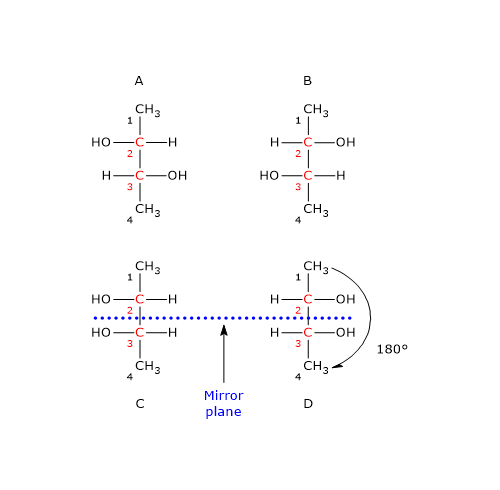In 1956, Robert Sidney Cahn, Christopher Ingold, and Vladimir Prelog developed a nomenclature system which, based on a few simple rules, allows the assignment of the absolute configuration to each chiral center in a molecule.[1][2]
This nomenclature system, called the RS system or the Cahn-Ingold-Prelog (CIP) system, when combined with the IUPAC system of nomenclature, makes it possible to name chiral molecules accurately and unambiguously, even when there is more than one asymmetric center.[3]
In most cases, chiral molecules are able to rotate plane-polarized light when it passes through a solution containing them. In this regard, it should be emphasized that the sign of the rotation of plane-polarized light caused by a chiral compound provides no information about the RS configuration of its chiral centers.
The Fischer-Rosanoff convention is another way to describe the configuration of chiral molecules.[4] However, compared to the RS system, it labels the whole molecule rather than each individual chiral center, and it is often ambiguous for molecules with two or more chiral centers.[5]
Contents
Priority rules of the RS system
The RS system assigns a priority sequence to the groups attached to a chiral center. By tracing a curved arrow from the highest-priority group to the lowest (excluding the group positioned away from the observer), each chiral center is labeled as either R or S.[6][7]
First rule
A priority sequence is assigned to the groups based on the atomic number of the atoms directly bonded to the chiral center.
The atom with the highest atomic number is given the highest priority, while the atom with the lowest atomic number is given the lowest priority.
For example, if an oxygen atom (O, atomic number 8), a carbon atom (C, atomic number 6), a chlorine atom (Cl, atomic number 17), and a bromine atom (Br, atomic number 35) are attached to the chiral center, the priority order is:
Br > Cl > O > C.
For isotopes, the atom with the higher atomic mass is assigned the higher priority.[8]
Second rule
When different groups are attached to a chiral center through identical atoms, the priority sequence is determined by examining the atomic numbers of the next set of atoms bonded, moving outward from the chiral center until the first point of difference is found.
For example, consider the following groups attached to a chiral center: –CH3, –CH2CH3 and –CH2OH. These all have a carbon atom directly bonded to the chiral center. To determine priority, we analyze the atoms bonded to each of these carbons:
- methyl group (–CH3): H, H, H
- ethyl group (–CH2CH3): H, H, C
- hydroxymethyl group (–CH2OH): H, H, O
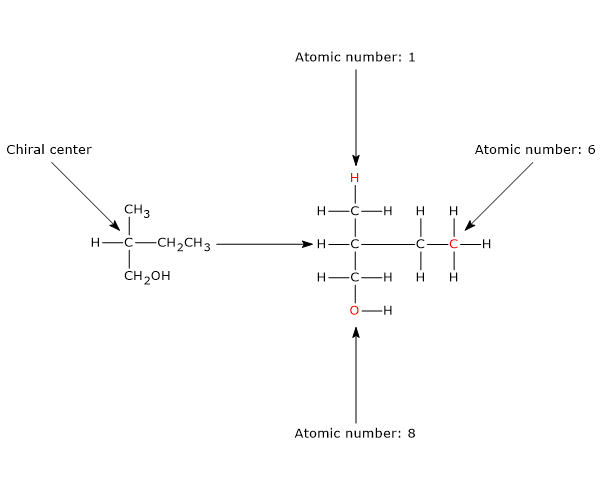
Since oxygen has a higher atomic number than carbon, and carbon has a higher atomic number than hydrogen, the order of priority is:–CH2OH > –CH2CH3 > –CH3
A typical priority order for common substituents is:
–I > –Br > –Cl > –SH > –OR > –OH > –NHR > –NH2 > –COOR > –COOH > –CHO > –CH2OH > –C6H5 > –CH3 > –2H > –1H
Note: 2H > –1H refer to the isotopes deuterium and protium, respectively.
It is important to note that the groups attached to a chiral center must not have identical priority, as this would mean the center is not chiral.
Once the priority sequence has been determined, orient the molecule in space so that the group with the lowest priority is pointing away from the observer, i.e., behind the chiral center. Then, trace a circular arrow from the highest-priority group to the next in sequence.
- If the arrow moves in a clockwise direction, the configuration is R (from Latin rectus, meaning “right”).
- If the arrow moves in a counterclockwise direction, the configuration is S (from Latin sinister, meaning “left”).[8]
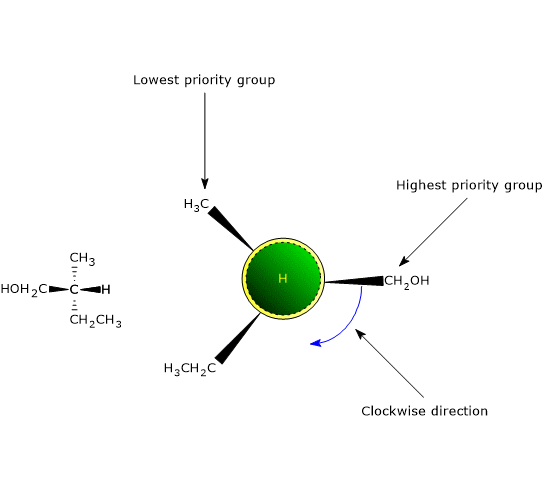
Third rule
The third rule of the RS system is used to determine the configuration of a chiral center when one or more of the attached groups contain double or triple bonds.
To assign priorities correctly in such cases, atoms involved in double or triple bonds are treated as if they were duplicated or triplicated, respectively.
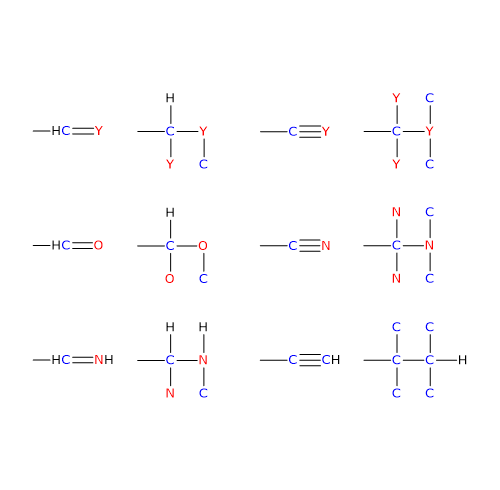
In the case of a C=Y double bond, the carbon is considered to be bonded to two Y atoms, and the Y atom is considered to be bonded to two carbon atoms.
In the case of a C≡Y triple bond, the carbon is treated as bonded to three Y atoms, and the Y atom as bonded to three carbon atoms. [8]
RS system and molecules with multiple chiral centers
When two or more chiral centers are present in a molecule, each center is analyzed independently using the rules previously described.
Consider 2,3-butanediol. This molecule contains two chiral centers, carbon 2 and carbon 3, and exists as three stereoisomers: two enantiomers and one meso compound. What is the RS configuration of the chiral centers in the enantiomer shown in the figure?
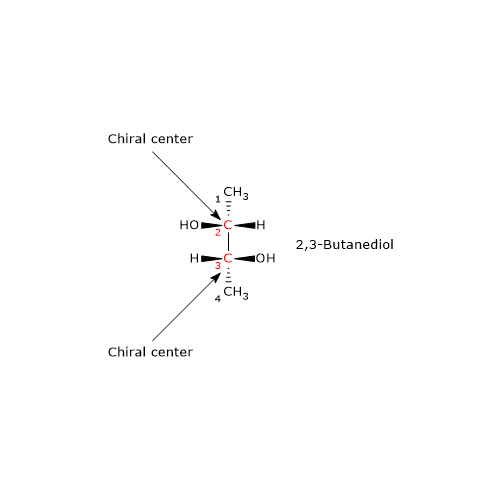
Let’s analyze carbon 2. The order of priority of the attached groups is:
–OH > –CH(OH)CH3 > –CH3 > –H
(Here, CH(OH)CH3 represents the portion of the molecule extending toward carbon 3.)
Rotate the molecule so that the hydrogen, the group with the lowest priority, is pointing away from the viewer (behind the plane). Then trace a path from –OH (highest priority) to –CH3. This path moves in a clockwise direction, so the configuration at carbon 2 is R.
Applying the same procedure to carbon 3, we also find its configuration to be R.
Therefore, the enantiomer shown in the figure is (2R,3R)-2,3-butanediol.
Amino acids and glyceraldehyde
In the Fischer-Rosanoff convention, all proteinogenic amino acids are classified as L-amino acids. In the RS system, with the exception of glycine, which is not chiral, and cysteine, which, due to the presence of a thiol group, is classified as (R)-cysteine, all other proteinogenic amino acids are (S)-amino acids.
Threonine and isoleucine each have two chiral centers: the α-carbon and an additional carbon atom in the side chain. Both exist as three stereoisomers: two enantiomers and one meso compound.
The naturally occurring forms found in proteins are:
- (2S,3R)-threonine
- (2S,3S)-isoleucine
These correspond, in the Fischer-Rosanoff convention, to L-threonine and L-isoleucine, respectively.
In the RS system, L-glyceraldehyde is classified as (S)-glyceraldehyde, and, accordingly, D-glyceraldehyde is (R)-glyceraldehyde.[9]
References
- ^ Cahn R.S., Ingold C., Prelog V. Specification of molecular chirality. Angew Chem 1966:5(4); 385-415. doi:10.1002/anie.196603851
- ^ Prelog V. and Helmchen G. Basic principles of the CIP‐system and proposals for a revision. Angew Chem 1982:21(8);567-583. doi:10.1002/anie.198205671
- ^ IUPAC. Compendium of Chemical Terminology, 2nd ed. (the “Gold Book”). Compiled by A. D. McNaught and A. Wilkinson. Blackwell Scientific Publications, Oxford (1997). Online version (2019-) created by S. J. Chalk. ISBN 0-9678550-9-8. doi:10.1351/goldbook
- ^ Rosanoff M.A. On Fischer’s classification of stereo-isomers. J Am Chem Soc 1906:28(1);114-121. doi:10.1021/ja01967a014
- ^ Voet D. and Voet J.D. Biochemistry. 4th Edition. John Wiley J. & Sons, Inc. 2011.
- ^ Garrett R.H., Grisham C.M. Biochemistry. 4th Edition. Brooks/Cole, Cengage Learning, 2010.
- ^ Moran L.A., Horton H.R., Scrimgeour K.G., Perry M.D. Principles of Biochemistry. 5th Edition. Pearson, 2012.
- ^ a b c Graham Solomons T. W., Fryhle C.B., Snyder S.A. Solomons’ organic chemistry. 12th Edition. John Wiley & Sons Incorporated, 2017.
- ^ Morris D.G., Drayton C., Hepworth J.D. Stereochemistry. Royal Society of Chemistry. 2001. doi:10.1039/9781847551948
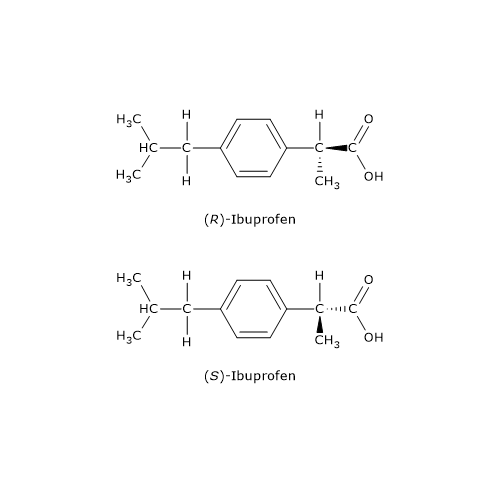
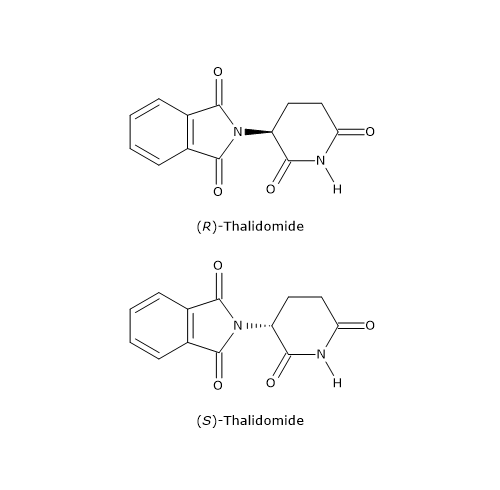
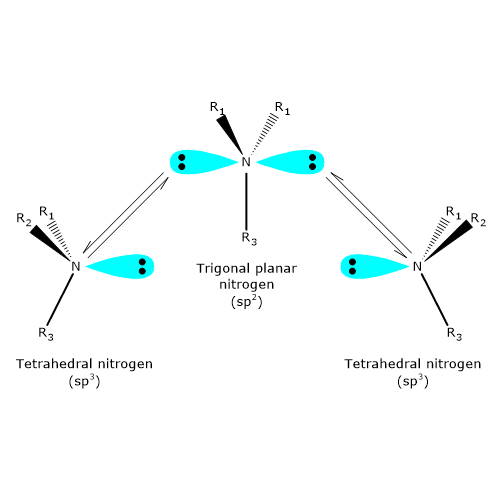
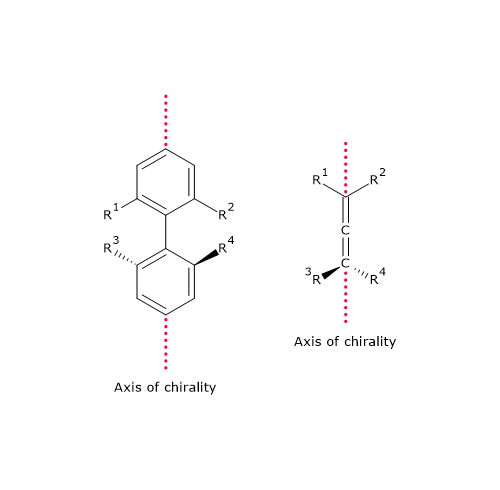 In such cases, chirality results from the presence of an axis of chirality rather than a center. This form of chirality is known as axial chirality.
In such cases, chirality results from the presence of an axis of chirality rather than a center. This form of chirality is known as axial chirality.